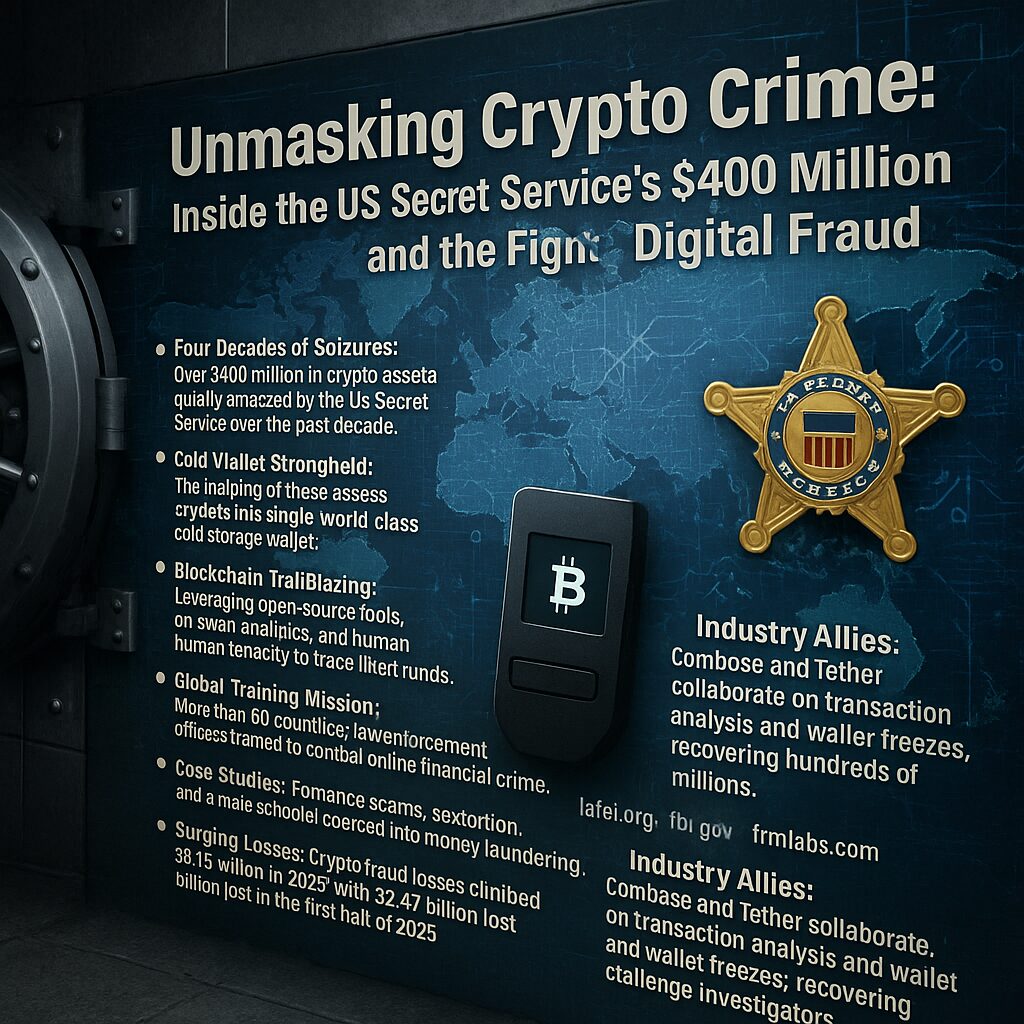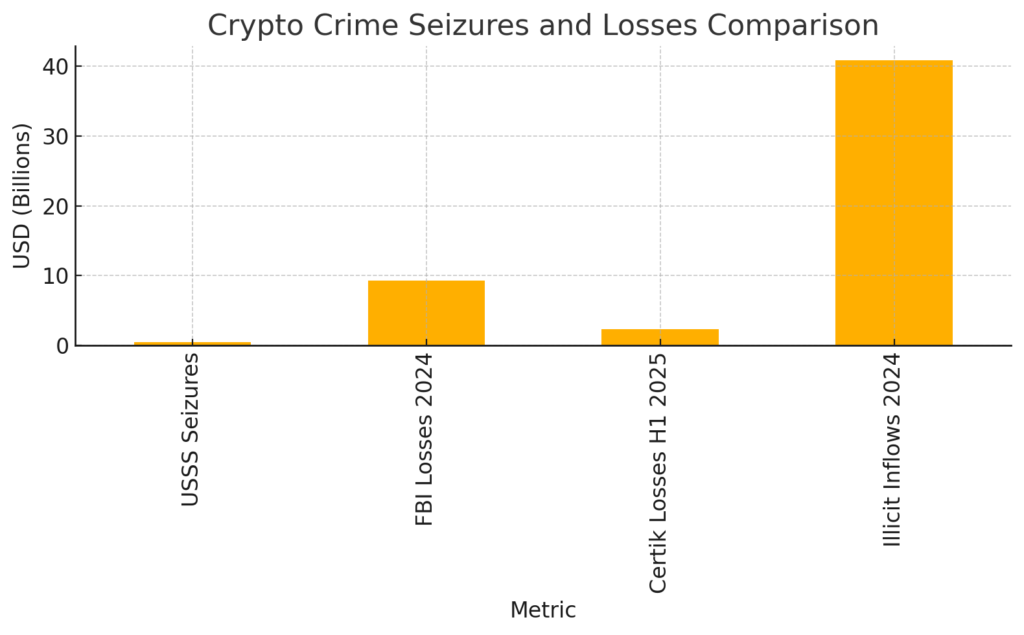
Main Points:
- US Secret Service (USSS) has quietly seized nearly $400 million in crypto assets over the past decade, storing most in a single world-class cold wallet.
- Investigators leverage open-source tools, on-chain analytics, and operational mistakes (like VPN slip-ups) to trace illicit funds.
- The Global Investigative Operations Center (GIOC) has trained law enforcement from over 60 countries in crypto-fraud detection.
- Crypto-fraud losses reached $9.3 billion in 2024—over half of all internet crime losses—and $2.29 billion net in the first half of 2025.
- Industry partnerships with platforms like Coinbase and Tether have enabled major recoveries, including $225 million in USDT.
- Despite a slight decline in illicit inflows to crypto addresses ($40.9 billion in 2024), scams, hacks, and ransomware remain sophisticated and growing threats.
Cold Wallet Stronghold
Over the last decade, the USSS’s GIOC has amassed almost $400 million in seized cryptocurrency, consolidating the bulk in a single cold-storage wallet. This stealth accumulation, first reported by Bloomberg, represents one of the largest government-controlled crypto reserves in existence. By quietly securing assets from a string of fraud investigations, the agency has built a powerful financial bulwark against criminal networks.
The Blockchain Trail
Central to the Secret Service’s success is its adept use of blockchain forensics. Jamie Lam, an investigative analyst, revealed that his team combines domain-registration data, transaction-graph analysis, and even digital slip-ups (such as brief VPN failures exposing IP addresses) to pinpoint fraudsters’ identities and financial trails. This patient, data-driven approach often hinges on exploiting small operational mistakes by criminals.
Global Training and Cooperation
Under the leadership of Kali Smith, the GIOC has conducted specialized training sessions in more than 60 countries, targeting regions with lax crypto oversight or residency-for-sale programs. Many participants report being unaware of the scale of crypto fraud in their own jurisdictions until after these intensive, week-long workshops. This global network strengthens cross-border investigations and deters illicit actors seeking safe havens.
Crypto Crime by the Numbers
Below is a snapshot of key metrics illustrating the scale of crypto crime and enforcement efforts: <!– The following chart and table were generated via Python to visualize comparative figures. –>

The data shows:
- USSS Seizures: $0.4 billion
- FBI-reported Crypto Fraud Losses 2024: $9.3 billion
- Certik-reported Net Losses H1 2025: $2.29 billion
- Chainalysis-reported Illicit Inflows 2024: $40.9 billion
This stark comparison underscores both the enormity of illicit crypto flows and the relative scale of law-enforcement recoveries.
Industry Collaboration and Recoveries
Recovering stolen crypto often depends on private-public collaboration. Coinbase’s transaction-monitoring teams and Tether’s proactive freezing of dubious addresses have been instrumental in high-profile recoveries. Notably, one of the largest single recoveries involved $225 million in USDT linked to a romance-scam network, illustrating the value of coordinated efforts.
The Evolving Landscape of Illicit Crypto
While Chainalysis reports a 24 percent drop in value received by known illicit addresses in 2024 ($40.9 billion), the ecosystem has professionalized, with cyber-fraud tactics spanning ransomware, pig-butchering scams, and state-linked hacks. Meanwhile, Certik data shows that hacks and scams alone netted nearly $2.5 billion in H1 2025, a net $2.29 billion after recoveries. As the stakes rise, investigators must continuously adapt, using multi-chain analytics and international cooperation to stay ahead.
Conclusion
The US Secret Service’s unconventional strategy—quietly accruing a massive cold wallet, exploiting blockchain transparency, and building a global enforcement network—demonstrates a pivotal evolution in the fight against crypto crime. However, the sheer volume of illicit inflows and the escalating sophistication of scams and hacks make clear that no single agency can tackle this alone. Only through sustained collaboration between law enforcement, industry, and international partners can the balance tip in favor of security and trust in the digital-asset space.

